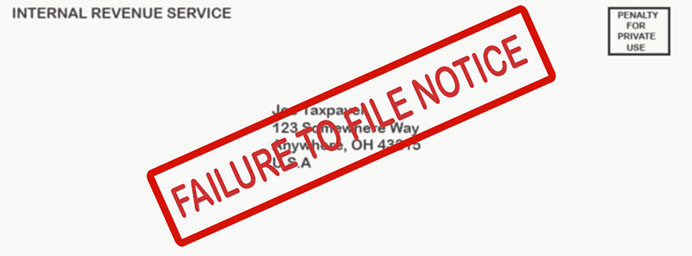The Internal Revenue Service (IRS) requires that you file a tax return each year that your income is greater than your standard deduction. In other words, if you are generated income or revenue you need to file a tax return with IRS. Many taxpayers do not comply with filing a return even when it is necessary. Here is how to file back taxes.
General Steps on How to File Back Taxes
Step 1: Gather Information about Income
Get the details of your income for the time you are required to present. You will need your previous W-2 and 1099(’s) for those years. You can ask the IRS for an alternative by filing an IRS Form 4852 if you are unable to get W-2 from your company and you need it.
If you deal with capital assets during the period, you also have to declare this income. However, if you aim at stopping accrued interest and fines, prior to getting a copy of your Form W-2 or 1099, you can make a payment of tax after estimating your income.
Step 2: Determine Deductions and Exemptions
Decrease your tax account with exemptions and deductions. Simply because you are filing your return overdue does not mean you will lose the deductions and exemptions you may have taken. If you aim at itemizing your deductions, you are required to get documents that will help you with that.
You can claim the standard deductions for the period if you don’t have the necessary documentation. You can also reduce your tax base with exemptions for dependents that you were eligible to claim in previous years.
Step 3: Obtain the Appropriate Tax Forms
Get the correct forms and instructions for the specific years in question. Your overdue statements must be submitted on the original tax forms. You can access tax forms from previous years by contacting the IRS. Do not make the mistake of using tax forms of current years or you may end up making the return statement again.
Step 4: Complete the Tax Forms
Fill out the necessary forms according to the instructions on those forms. Since tax laws change from year to year, it is important that you use the corresponding instructions for the fiscal year for which you file a return. Apart from the confusion, it will cause, following the wrong instructions can cause you to pay more or less the amount of taxes you owe.
Step 5: Submit Your Tax Return
Send in your tax return, and all documentation to the address indicated on the instructions. Sending your statement to the wrong address can delay the time it takes for the IRS to process it. To get results easier and faster, you can complete your previous year’s statement using a tax e-file software.
 Advice from Tax Attorneys
Advice from Tax Attorneys
Make sure you make a copy of all the documents you send to the IRS. Documents are lost from time to time, and you may need a backup copy in case you are audited. It is important to contact a tax attorney for legal advice on how to file back taxes.
What You Should Do If You Can’t Afford To Pay the Back Taxes
If you owe taxes but cannot pay the IRS, consider filing Form 9465 (Installment Agreement Request) with your tax return to request an installment payment plan. In certain situations, the IRS cannot deny a request for installment payment if you owe less than $10,000. That said, you must pay for everything you can when you file your tax return. Even if they approve your payment request in installments, you will be charged interest and penalties for late payment of taxes that are unpaid at the due date. You can avoid notices and other IRS collection actions. A Federal Tax Debt Lien could be issued so make sure you are proactive. If you do not know how to file back taxes you should speak to our tax specialist for immediate help.
Other Alternative for Back Tax Taxpayers
If you owe back taxes, here are a few tax debt relief programs that you can apply:
- The plan installment payment (Installment Agreement) is available for people who cannot pay their total tax debt at once. This program allows people to pay small monthly payments until they finish paying all the debt.
- Under the Fresh Start initiative, the IRS raised the limit amount of tax debts for simplified installment payment plans from $25,000 to $50,000 and extended the repayment period from five to six years. Taxpayers who owe less than $50,000 can submit their application on the IRS website and do not have to complete the Collection Information Declaration (form 433-A, form 433-B, or form 433-F ) of the IRS.
- A transaction offer (Offer in Compromise or OIC) allows taxpayers to permanently resolve their tax debt by paying less than the amount owed. The offer in transaction or OIC is an important tool to help people, but only applies in limited circumstances; this is an option that is available only to those taxpayers who have exhausted the other payment options.
- The IRS extended the offer of transaction offering to help more taxpayers with payment problems under its Fresh Start initiative. Nevertheless, the IRS is going to reject any present of this type if it considers that the taxpayer can pay his debt or using an installment payment plan or as a lump sum.
Still need help? Talk to our tax lawyers today. We solve back tax problems!







